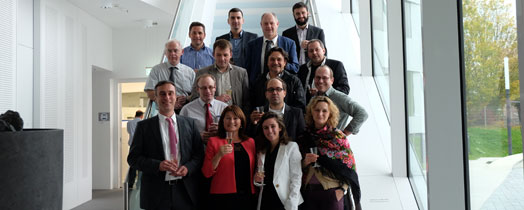Simulation even SMEs can afford

DREAM project Fraunhofer IAO
The sheer complexity of today’s production systems makes “going with your gut” decision making a questionable approach at best. So as part of the EU-funded project DREAM, a simulation-based support system was developed to help decision makers in planning and managing production. And thanks to the project’s pragmatic approach, the solution can be easily implemented – even by small businesses.
Companies with manufacturing operations in Europe, especially in Germany, are facing particular challenges because of short innovation cycles and the accompanying rush to launch new products. Having an efficient, simulation-based support system for decision making helps employees increase the efficiency of their production processes and order management, which in turn provides for a more agile production setup.
Yet small and medium-sized enterprises (SMEs) often can’t afford to implement and operate expensive simulation software. To close this gap, Fraunhofer IAO initiated the DREAM project and coordinated it along with the Institute of Industrial Engineering and Technology Management IAT at the University of Stuttgart.
The project partners used open source software to develop a platform that provides companies with support for production planning. Since the platform facilitates web-based access to simulated production lines and order management at manufacturing SMEs, using these tools becomes affordable for those companies.
Web-based access to the platform
Companies can use the DREAM platform as a tool in their production planning via the Internet. Information from existing IT systems such as ERP, MES and DSS is fed into the simulation, which requires one-time setup of the necessary interfaces.
The software is user-friendly and makes it possible to draw on a variety of resources when designing production systems. It also enables users to recycle existing models of resources, production systems, and parts of those systems.
Proactive support for using simulations
Human-system interaction was a focal point of the research, with the goal being to support users of the simulation tool with task-based information. One use case for user support involved guiding inexperienced users through a non-standardized simulation process. Using the concept developed for this use case, it proved possible to save one third off the time needed to operate the simulation tool.
DREAM was funded from 2012 to 2015 by the EU as part of the European Commission’s 7th Framework Programme. Four manufacturing companies were involved in helping develop the simulation tool and have since successfully implemented the solution.
Contact:
Joachim Lentes
Fraunhofer IAO
E-Mail: joachim.lentes@iao.fraunhofer.de
Phone: +49 711 970-2285
https://www.iao.fraunhofer.de/lang-en/about-us/press-and-media/1255-simulation-e…
http://www.it-production.com/index.php?seite=einzel_artikel_ansicht&id=62679
http://www.dream-simulation.eu/
http://www.manpy-simulation.org/
Media Contact
All latest news from the category: Machine Engineering
Machine engineering is one of Germany’s key industries. The importance of this segment has led to the creation of new university degree programs in fields such as production and logistics, process engineering, vehicle/automotive engineering, production engineering and aerospace engineering among others.
innovations-report offers informative reports and articles covering technologies such as automation, motion, power train, energy, conveyor, plastics, lightweight construction, logistics/warehousing, measurement systems, machine tools and control engineering.
Newest articles

NASA: Mystery of life’s handedness deepens
The mystery of why life uses molecules with specific orientations has deepened with a NASA-funded discovery that RNA — a key molecule thought to have potentially held the instructions for…

What are the effects of historic lithium mining on water quality?
Study reveals low levels of common contaminants but high levels of other elements in waters associated with an abandoned lithium mine. Lithium ore and mining waste from a historic lithium…

Quantum-inspired design boosts efficiency of heat-to-electricity conversion
Rice engineers take unconventional route to improving thermophotovoltaic systems. Researchers at Rice University have found a new way to improve a key element of thermophotovoltaic (TPV) systems, which convert heat…



